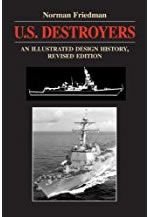USS Hull (DD-7), c.1906-7
|
|
USS Hull (DD-7) was a Hopkins class destroyer that spent most of her service career operating in home waters. After the US entry into the First World War she protected the Panama Canal Zone and then carried out anti-submarine patrols in the Atlantic.
The Hull was launched on 21 June 1902 and commissioned on 20 May 1903. She was named after Isaac Hull, one of the most successful American naval commanders of the War of 1812.
In 1903-1905 the Hull was based on the US East Coast, and carried out patrols off Newport and in Chesapeake Bay. She took part in a cruise to the Caribbean in January-April 1905 and then was taken out of commission on 30 September 1905 (at about the same time the Bainbridge class destroyers were taken out of commission while their boilers underwent repairs).
The Hull was recommissioned on 14 November 1906. She took part in exercises around Cuba and then returned to Newport. In October 1907 she was selected as one of the escort vessels for the 'Great White Fleet', the sixteen battleships that circumnavigated the world between 16 December 1907 and 22 February 1909. The Hull accompanied the Great White Fleet on the first part of the world tour, the voyage around Central and South American. The fleet reached San Diego on 28 April 1908, where the Hull left the expedition.
The Hull was based around San Francisco for the next year, before leaving for a Pacific cruise that lasted from 24 August to November 1908. During this period she visited Hawaii and Samoa. She spent the next four years based on the California Coast, before being decommissioned into the Reserve Torpedo Division at Mare Island on 30 October 1912. This wasn't a total decommissioning, and the Division made a number of training cruises along the California coast. Early in 1917 the Hull underwent a refit, and this was still ongoing when the United States entered the First World War.
On 24 April the Hull sailed for the Panama Canal Zone, and for three months she patrolled off the western entrance to the Canal.
On 26 July the Hull left the Canal Zone and sailed for Norfolk, Virginia. From then until the end of the war she took part in the anti-submarine campaign in the western Atlantic. During this period she escorted ships heading to Bermuda as well as patrolling the western Atlantic. In August 1917 she helped escort the Battleship Force Atlantic as it moved along the coast. In June 1918 she successfully prevented an attack by U-151, although the submarine escaped. She also acted as a rescue vessel, recovering sailors whose ships had been sunk.
The Hull was decommissioned on 7 July 1919, as part of a general move to scrap the older coal fired destroyers. She was sold for scrap on 5 January 1921.
Displacement (standard) |
408t |
Displacement (loaded) |
|
Displacement |
248ft 8in |
Top Speed |
29kts |
Engine |
4 Thornycroft boilers |
Range |
|
Length |
248ft 8in |
Width |
24ft 6in |
Armaments |
Two 3in/50 guns |
Launched |
21 June 1902 |
Completed |
20 May 1903 |
Fate |
Sold 1921 |
 U.S. Destroyers: An Illustrated Design History, Norman Friedmann .
The standard history of the development of American destroyers, from the earliest torpedo boat destroyers to the post-war fleet, and covering the massive classes of destroyers built for both World Wars. Gives the reader a good understanding of the debates that surrounded each class of destroyer and led to their individual features.
U.S. Destroyers: An Illustrated Design History, Norman Friedmann .
The standard history of the development of American destroyers, from the earliest torpedo boat destroyers to the post-war fleet, and covering the massive classes of destroyers built for both World Wars. Gives the reader a good understanding of the debates that surrounded each class of destroyer and led to their individual features.